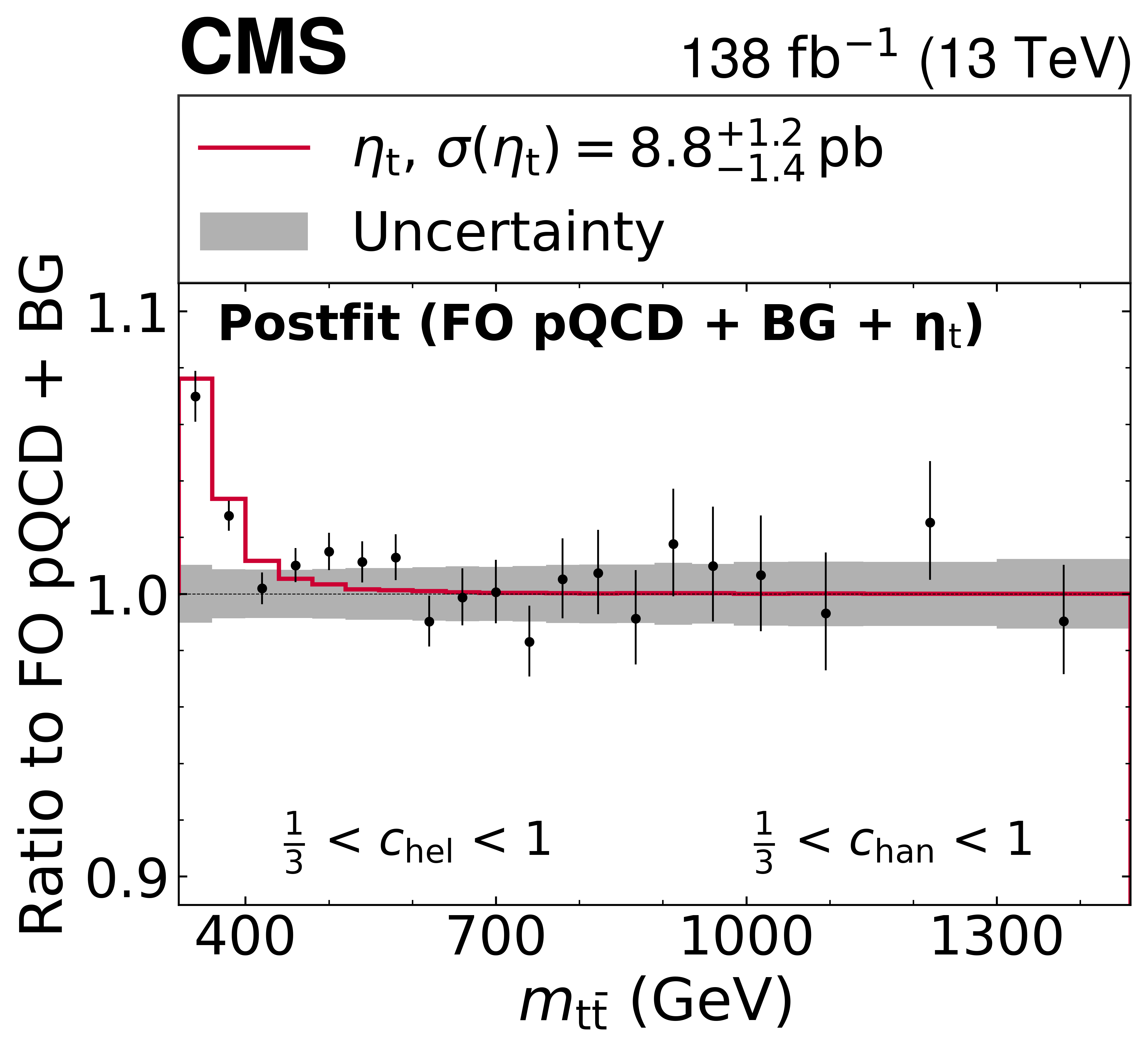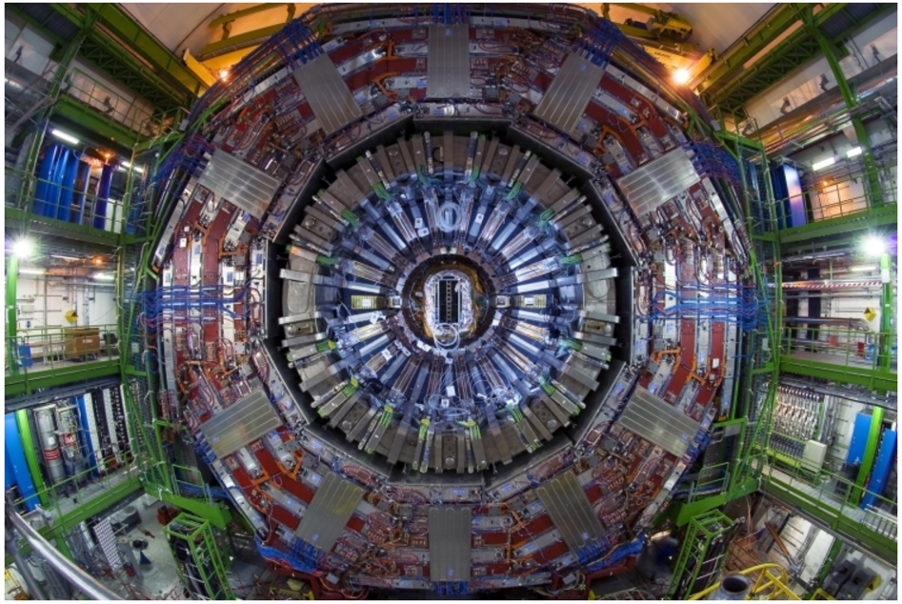
An excess in data hints at the existence of a top quark-antiquark quasi-bound state, called “toponium”.
The CMS collaboration has reported an excess in interactions involving top quark pairs. The results are consistent with a pair of top quark and antiquark embracing each other as a consequence of an attracting force. This effect, where top quark-antiquark pairs form a quasi-bound state called “toponium”, is expected within the standard model of particle physics and predicted by non-relativistic quantum chromodynamics (QCD) calculations.
Being the heaviest elementary particle in the standard model, the top quark has long been thought to be too short-lived to form bound states of quarks and antiquarks. This is in stark contrast with the lighter quarks, which are observed only in combinations with other quarks, collectively referred to as hadrons. However, the interactions between top quarks are predominantly described by the strong force, and they are therefore subject to the same effects that lead to the formation of hadrons for the lighter quarks. “A top-antitop quasi-bound state can be thought of as slow-moving top quarks that exchange gluons, leading to binding effects”, explains Alexander Grohsjean, a scientist at the University of Hamburg.
In proton-proton collisions, the top quark-antiquark quasi-bound states are mostly predicted to be in the pseudoscalar toponium ground state, meaning the system has zero total and orbital angular momentum. This is in contrast with a scalar toponium state, where only the total angular momentum is zero. These different quantum numbers lead to distinct patterns in the angular information of the decay products of the top quarks, which can not only be used to distinguish them from each other, but also from “regular” top quark pair production with no binding effects involved.
Comparing proton-proton collisions recorded by the CMS detector with state-of-the-art theoretical predictions, we observed an unexpected excess in the production of top quark-antiquark pairs near the threshold, right where the available energy is enough to create two top quarks. Categorizing the mass distribution based on the angular information of the decay products, a clear pattern emerges: the data favors an additional contribution from the production of a pseudoscalar state.

Figure 1: Ratio between the observed distribution of the reconstructed invariant mass of the top quark-antiquark pair system in the most sensitive category of the angular observables, and the corresponding expected distribution according to the background model involving fixed-order perturbative QCD calculations (FO pQCD + BG). The contribution of the effective top-antitop quasi-bound state prediction, scaled to match the observed data, is shown in red. The presence of the excess near the mass threshold is visible.
“Now, an important question is whether this is indeed the result of a quasi-bound state between a top quark and an antiquark,” says Laurids Jeppe, a PhD student at DESY, ”or could it be just a subtle side effect of imperfect modeling of the backgrounds, which involves very challenging calculations?”
Or even more, could the excess actually be caused by sources of physics beyond the standard model? “While our data seems to be consistent with the presence of a top quark-antiquark quasi-bound state”, adds Christian Schwanenberger, a scientist at DESY and professor at the University of Hamburg, “we can not exclude that the excess might be due to the existence of a new elementary pseudoscalar particle.” As unlikely as it is, such an explanation remains possible, with challenging consequences for our current understanding of particle physics.
"More theoretical work is needed to model this system reliably," says Afiq Anuar, a postdoctoral researcher at DESY. "Our next step will be to explore the origin of this fascinating new signal. Exciting times lie ahead!"
Written by: Afiq Aizuddin Anuar and Alexander Grohsjean, for the CMS Collaboration
Edited by: Andrés G. Delannoy and Muhammad Ansar Iqbal
Read more about these results:
-
CMS Publication (TOP-24-007): "Observation of a pseudoscalar excess at the top quark pair production threshold"
-
Display of collision events: CERN CDS
-
@CMSExperiment on social media: Bluesky - Facebook - Twitter - Instagram - LinkedIn - TikTok - YouTube

